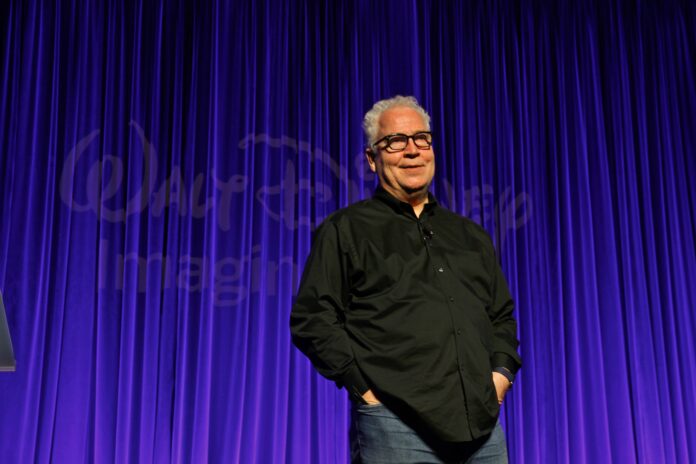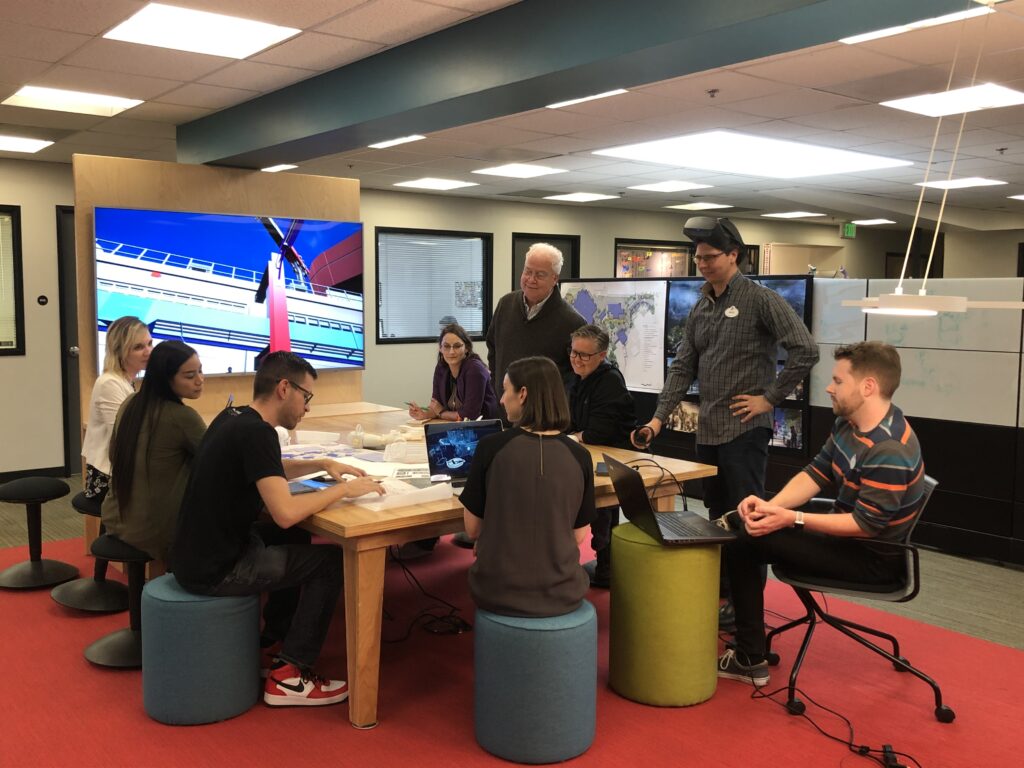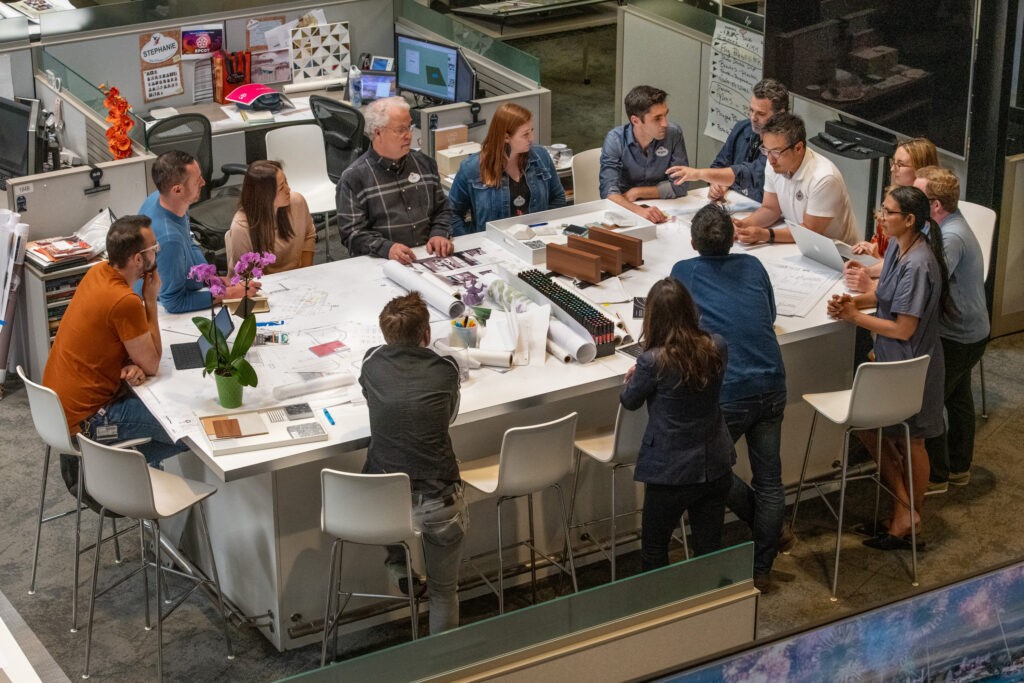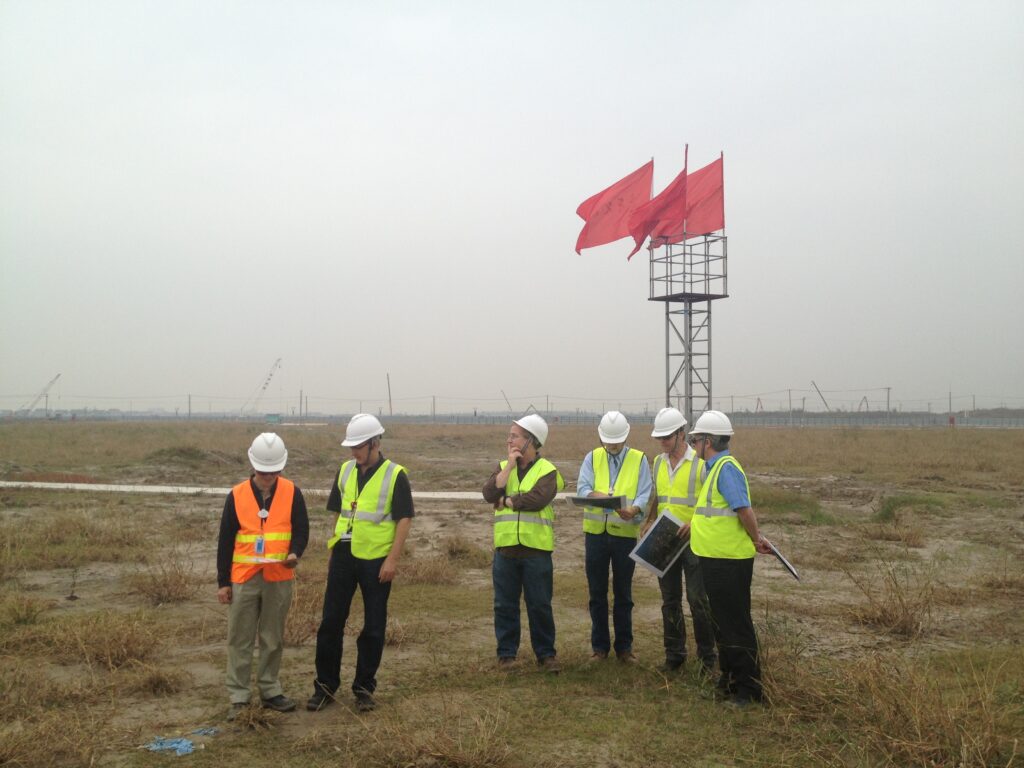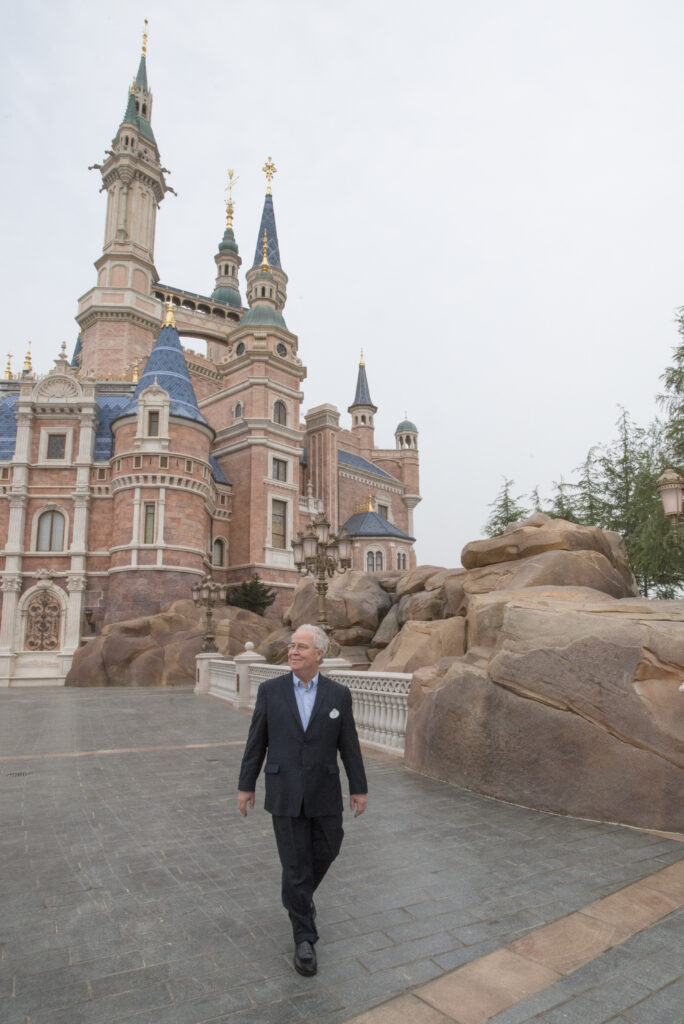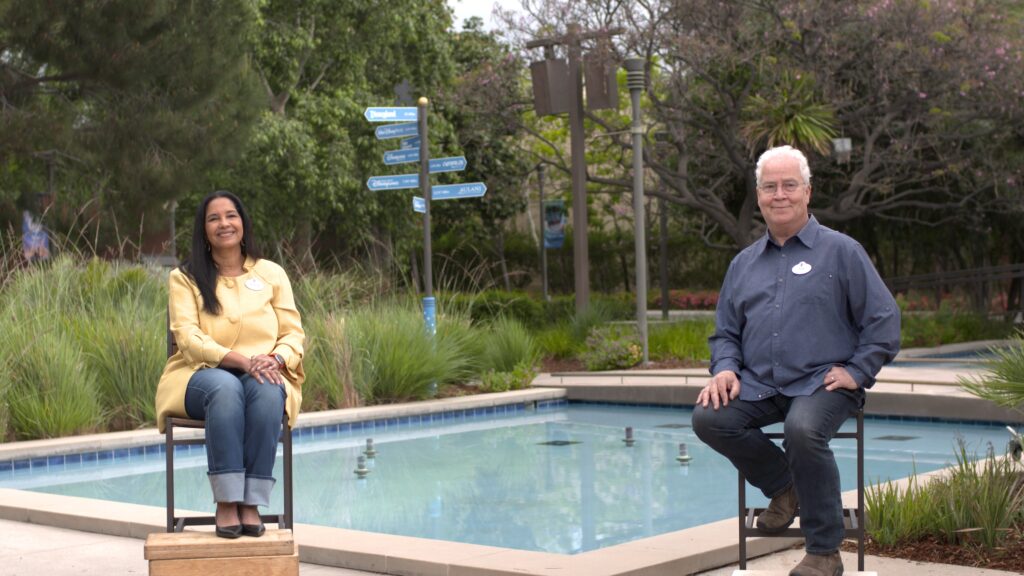Interview by Judith Rubin
Bob Weis has been part of Walt Disney Imagineering executive leadership since 2008 and is now transitioning from the role of President to that of Global Ambassador, a role originated by the late Marty Sklar. His successor as president of Imagineering is Barbara Bouza. In addition to his theme park work, Weis has led influential projects in museums, science centers, and cinema.
Marty Sklar and Bob Weis have both been honored by the Themed Entertainment Association (TEA) with the Buzz Price Thea Award for a Lifetime of Distinguished Achievements. Weis was honored in 2020. Sklar was only the second person to receive the award, in 1995; the late Harrison “Buzz” Price was the first, in 1994, and the award was eventually named after him.
Weis is an alumnus of California State Polytechnic University, Pomona, where he studied architecture and theater. We were honored to have him join us to talk about his career accomplishments and legacy in the attractions industry, and his approach to fostering creativity.
This interview is also available as Track 10 of the InPark Tracks podcast.
What are some of the key things Marty Sklar did during his years as Global Ambassador for Imagineering?
Marty continues to be an inspiration and his are big shoes to fill. He was able to focus almost all his time on talent and peer-reviewing big ideas. He did important work developing and bringing new talent – especially diverse talent – into the company and broadening perspective across the industry. Marty was passionate about this business, and I certainly share that passion with him. He wrote a lot about his experiences. He was a great speaker.
I think that right now there’s an urgency – a great urgency – in developing talent. There’s quite a bit of talent movement right now in terms of people who are thinking about retiring, who have been with this business for a long time. And there are excited new people, passionate people coming in. The idea is to foster mentorship and foster the legacy of what Imagineering has done – to use that legacy in a way that helps leverage us toward a new future, the future that the audience is calling for.
Part of what I’m doing now is having conversations with Leah Sklar, Marty’s widow, about why and how he approached things, and looking a lot at his papers to get a sense of how we can best serve the Imagineer of the future by leveraging our legacy and our knowledge.
Why is it important to the industry that there be an Imagineering ambassador?
Think about groups such as TEA that have come together and dissolved the strong division lines that once existed between companies to bring us together as an industry. We honor each other, we honor the contributions that we make. We are enriched by what can be learned from best practices – in everything from storytelling to safety to technology. It’s great for the industry – and it can be further stimulated by having ambassadors who can share the information and the best practices – and also the excitement for what we all do, and a perspective on the evolution of the whole market.
What are some of the first things you are going to do in this role as Imagineering ambassador?
Well, again, I think there’s an urgency. The industry is growing, Disney is growing, and there are potential needs for the next phase of our work – not just internationally and domestically in the parks, but also outside of our parks.
We also have a tremendous need and desire for diversifying our workforce and being more inclusive. The need to be more inclusive and diverse is not just within Imagineering as a workplace, but also to serve our audiences everywhere we go in the world. There’s more we must do to accomplish that. This also ties into education. We like the fact that people want to come to work at Imagineering, and we want to foster our relationships with many great diverse schools around the world. That’s work that is ongoing and we want to focus more on it.
Thinking back again to Marty Sklar, he encouraged programs such as the Disney Imaginations competition that brought students from diverse backgrounds and allowed us to see what they were capable of.
Marty was a great communicator. He was a prolific writer, and he kept great records. We’ve located more than a thousand boxes of records from Marty’s office. And so one of the programs we have going right now is to go through this tremendous, museum-quality archive of Marty’s memory all the way back to when he worked for Walt Disney at Disneyland. It goes through the history of Disneyland, Disney’s work at the 1964 New York World’s Fair, all the way through all the years of EPCOT and many other projects. There’s tremendous insight there that we want to share with all of our colleagues. I think if Marty were here, he’d encourage us to share the history and share the insight – but to think about it in the context of what we’re facing today and how the future can be enriched by the learnings of people who’ve come before us. And we’ve always seen Imagineering as a company that stands on the shoulders of others who came before, of the great examples that came before.
You are known as an extraordinary mentor. And in your new role, you will be having a lot of dialogue with students and educators. You began by studying architecture and theater; where should today’s candidates begin their careers?
When you think about the work that we all do today, especially the work we do at Disney, it’s storytelling in so many different ways. It involves traditional disciplines like design and the arts and engineering – all the things that originally made up Imagineering – that combination of engineering and creativity – but storytelling can take different forms now that we’re involved in artificial intelligence and virtual reality and so many different technologies.
And so we just need a diversity of really talented, passionate people from a variety of disciplines. But I would also say, no matter what major you might study – and I tell this to most students: Whatever your passion or your major is, collaborate. Collaborate with others. Theater, of course, is a very collaborative art form. Collaboration is one of the things Marty stressed in the Imaginations program. From the beginning, it was thought of as a collaborative program where students would work together in groups.
Because one of the characteristics of our business is that we’re not single artists. We work in huge teams to create these amazing technical achievements and creative achievements – to make them work every day for every guest that comes through the park – with so many different systems involved. To create something like Star Wars: Rise of the Resistance calls for diverse teams, made up of people who love to work together and collaborate and learn from each other. We want the schools we work with to understand the importance of collaboration in that light. We also want to help ensure that there’s a steady crop of best-of-the-best students, from a wide range of backgrounds, to be able to participate in the kind of projects that we do all over the world.
Your peers know you to be an exceptional team leader and creative collaborator. Back in 2005, when I was writing a story about Top of the Rock, a project you did at Rockefeller Center with your former company Design Island, you spoke of working in a “virtuoso group.”
Virtuoso team. I may have borrowed that term! But what I meant by virtuoso teams is to always select the best people that you possibly can. Reach high. Don’t shy away from people who you think might be smarter than you. You want to have people that are better than you are at what you’re trying to do and have the best possible team. And it’s also, I think, okay if it’s not always peaceful. There should be arguments. There should be discussion and disagreement – peaceful, collaborative disagreement. If there isn’t, you may not be working hard enough.
I love running teams that have a collaborative nature and tremendous talent, and where the members are passionate and willing to speak freely. You know, these projects last a long time. You could be working with a team for five, six, seven years, and traveling around the world with them. So it’s great when you have people that challenge you, who are fun, who like to work together, and to share the passion that we all share.
Do you approach storytelling differently now than when you began?
I think I have a higher appreciation of story now than I ever did before. And I think that it’s from working on more projects and working with some of the great storytellers – from Tom Fitzgerald to Kevin Rafferty, to Bob Rogers and others – people who have been just exemplary storytellers in this business. And today our projects are so complex, including technically complex, that there are risks. You can often get very deep into a project and realize that you might be losing focus of what the story was or of the importance of the clear story for the guest. And you must be always bringing that back to center, always having those questions you ask yourself: Will guests get this story, will they react emotionally? Will it grip them, will it work for them at all ages?
These are also things where many of us got great mentorship from Marty Sklar because he was always bringing things back to story and always willing to say, “does anybody get this? Is anybody going to care about this?” You know, we’re in a broad entertainment business, but we’re also in a broad enrichment business. So how do we make sure that the audience really gets something out of that? With the benefit of all the design disciplines and all the technical disciplines, we must always be keeping it focused on story.
But I do think it’s changed in that we have so many different ways to tell stories now. We have so many different kinds of animation and media and just so many ways to communicate our story, that keeping all of those working together becomes really important.
What are some of the high points of your creative career inside Imagineering and outside Imagineering?
One of the last projects I worked on before I was doing this role was, of course, Shanghai Disney Resort. I had first visited China in 1983, believe it or not, and it was a much different place than the next time I visited, which was about 15 years ago. And China gave us an opportunity to link Disney and Chinese culture in a way that had never been done before.
We saw that the stories that were well-known at Disney were not necessarily well-known in China and that the characters were not necessarily all well-known. So we really had to work closely with the audience and we did everything we could. We went out to schools, we conducted interviews. We talked about characters and storytelling. We brought storytellers from China into our team, and artists from China into our team. We did the work to create a project that was relevant to the Chinese audience. And the acceptance of the Chinese audience to Shanghai Disney Resort has been very powerful, I think, because of that work we did.
And you know, that’s how our parks work, when you think about any of our parks: Our guests own these projects. They believe that we have stewardship, but they own them. The experience of the parks touches their hearts, and they expect a lot from them. In Shanghai, it was all about storytelling and all about localizing our team, making sure the team was focused on localizing, and having great creative people from the local culture integrated into the team.
I’ve also been able to do some really fun projects outside of Disney. One was Top of the Rock which you mentioned, at Rockefeller Center when they reopened the observation decks. We got to tell a lot of the history of what an amazing place 30 Rock is, the vision behind that place in the city, and bring it to life for people. Also, when I was independent, I was able to do some documentary work – I got to shoot a movie on horseback for nine days on the trail, following the tracks of Lewis and Clark.
I’d say the most rewarding project that I’ve done with Disney where we leveraged our talent and experience on a project outside of our theme parks, resorts and cruise ships, was the children’s hospital program, which Bob Iger initiated a couple of years back where he wanted to bring Disney storytelling to families at possibly the most challenging point in their lives, with a child going into surgery or treatment. Iger came to Imagineering and said, “Can you help us do this?” and we were able to work with a consortium of children’s hospitals and doctors. We came up with a design package that just creates such a wonderful, friendly character, a story-driven atmosphere for everything, from the uniforms that the healthcare providers wear, to interactive elements around the rooms, to storytelling throughout waiting rooms – just making something warm and inspiring that could really serve families. So that’s an example of something that I did that was sort of outside the company, in a healthcare environment. We all found tremendous satisfaction by doing it, and the Company is continuing to provide these packages to hospitals now.
What’s it like when your body of work lives for many years in the public eye – how does that affect your experience?
Yeah, I think that’s something that many Imagineers think about – that many people in the business think about. And also people we work with who work in animation and who work in film. I think about Sean Bailey who is now head of Walt Disney Studios motion picture production and was one of the producers on TRON. When we built TRON Lightcycle Power Run in Shanghai, he was so excited to see that film remembered in a way that was active and would live on for decades and decades to come.
I think we feel that way about Pirates of the Caribbean; we feel that way about any project where there’s an opportunity. Pete Docter, Chief Creative Officer at Pixar Animation Studios, is so enthusiastic whenever he comes over and we’re doing something from one of Pixar’s movies. Movies may come and go over a shorter life span; obviously, they live as classics, but as park attractions, they live on and live on.
The opportunity to collaborate between Imagineers and filmmakers or Imagineers and people making television, or Disney Plus, is really exciting and it definitely builds something that you know is going to be there for a long time. If you asked me if some of the things that we’ve all worked on together would be 20, 30 years old by now and still running, still successful – it’s remarkable.
Now there are plenty of things that have evolved as well, and I think that that’s a healthy thing too – as Marty Sklar said at D23 Expo, one of the things Walt made clear – we don’t preserve things just to preserve them. We build great things and we keep them relevant. So it’s great to have long-lasting work. It’s also great to make sure we’re always doing our best for the audience.
The museum business has changed a lot over the last 20 years, and you’ve had something to do with that. Can you talk about how museums are part of the overall attractions sector?
I think that museums are among the great cultural assets of our world and one of the great creative venues to work in, having spent a lot of my own time working on the Museum of Science and Industry in Chicago, and the Fort Worth Museum of Science and History.
We have used many of the same storytelling tools that we use in the parks, but with a museum project, there’s also a layer of education and authenticity and unbelievable artifacts that no one else could possibly have. It has been gratifying to see people be able to move in both directions – from themed entertainment into museums and vice versa and to learn from each other.
The privilege of working in the theme park world and being able to do so many projects in so many environments, attractions, and different kinds of immersive stories, has been great. And then to be able to do some of that in the museum world, it’s equally great and just different enough – the missions are similar, but they’re different. You feel this enormous opportunity for storytelling in depth.
I thought a lot about my museum colleagues during COVID. I sit on the board of trustees of the National Museum of the American Indian, and it was impressive to see museums keep their programs going – to invest in digitizing collections and putting storytelling online so that people could still be connected to their history and their programs and their artists, even though the museums were closed for long periods of time. It’s been impressive to see, and they do it with non-profit budgets. Those institutions just keep on going with their mission, even in very, very difficult times.
Speaking of COVID, Disney has certainly grappled with the effects of the pandemic. Please talk about some of the changes you’ve seen.
Early on in COVID when the parks began to close, literally one day we were all in the office; the next day we were all working from home, and in many ways, we didn’t skip a beat. We all just kept going. And I remember maybe six months into COVID we had Bob Chapek on a Zoom call. We went through all the projects we were working on. And I remember he said, “If I didn’t know COVID was going on, I would have thought you were just doing the work you were doing last year.” We were powering through, but it wasn’t easy.
There were so many changes in the way that we work. How many people you could have on a team, how many people you could have on construction sites and in the field. It was very, very difficult to travel. But in the end, those things, I think, continued to improve the industry, its safety record and health record.
I think we did a lot of things to empower talent at local sites where maybe in the past we would have felt we had to fly a lot of people over to a country to support a project. We empowered the people there and rediscovered how much talent we have in these locations and how well they could do with less guidance directly from the U.S. We’ve definitely learned a lot, but we haven’t lost the dedication or the talent or the quality. And, it’s great for everybody to have had so many challenges and yet still see projects like Avengers Campus and new projects at EPCOT and around the world. As an industry, you know, you can’t keep us down. We just keep on.
Tell us something about Barbara Bouza and how Imagineering has been positioned for the future.
Barbara Bouza, remarkably, joined the company amid COVID. I had met Barbara and I had reached out to her and had such respect for her as a professional and in the design world, and as a very people-focused, talent-focused individual.
We had spent a few visits here trying to show her Imagineering when there was no one here – it was when everyone was working from home – but she was completely engaged. Not just in us as a design world, which you would expect from her background, but also her passion for research and development, for technology, for things like new ways of doing animation, new ways of developing ride systems and other techniques that we use.
I couldn’t be happier with how much Barbara has been able to reach out to Imagineers and encourage people to be confident, encourage them to think differently about the way we do projects.
As I focus now on more storytelling, mentorship, and some projects that I’ve wanted to do for a long time, I’m completely confident in Barbara’s ability to move the company forward.
Going forward, do you have some personal projects you’re going to be working on?
Well, I’d say Disney projects that are personal. I have some projects that I have wanted to do for a long time. I have gotten the support of Wendy Lefkon from Disney Publishing to do a book about the next period of Imagineering. It’s time to talk about this next era of Imagineering, and now we have this tremendous archive of undiscovered writing from Marty. Many of those projects, you know, came to their earliest dialogue in some of those papers. So I’m really excited about that, and the reason I’m excited is that I think those kinds of storytelling are incredibly meaningful, not just to our Imagineers and continuity in the future, but also to our audience. We’ve discovered through Disney Plus, with Leslie Iwerks’s “The Imagineering Story,” how powerful the Imagineering history and legacy is. We have found ourselves in an incredibly productive, quality collaborative relationship with Disney Plus, partly as a result of “The Imagineering Story,” but also just because Imagineering has a mountain of incredible history, art, storytelling, and background that is great for programming.
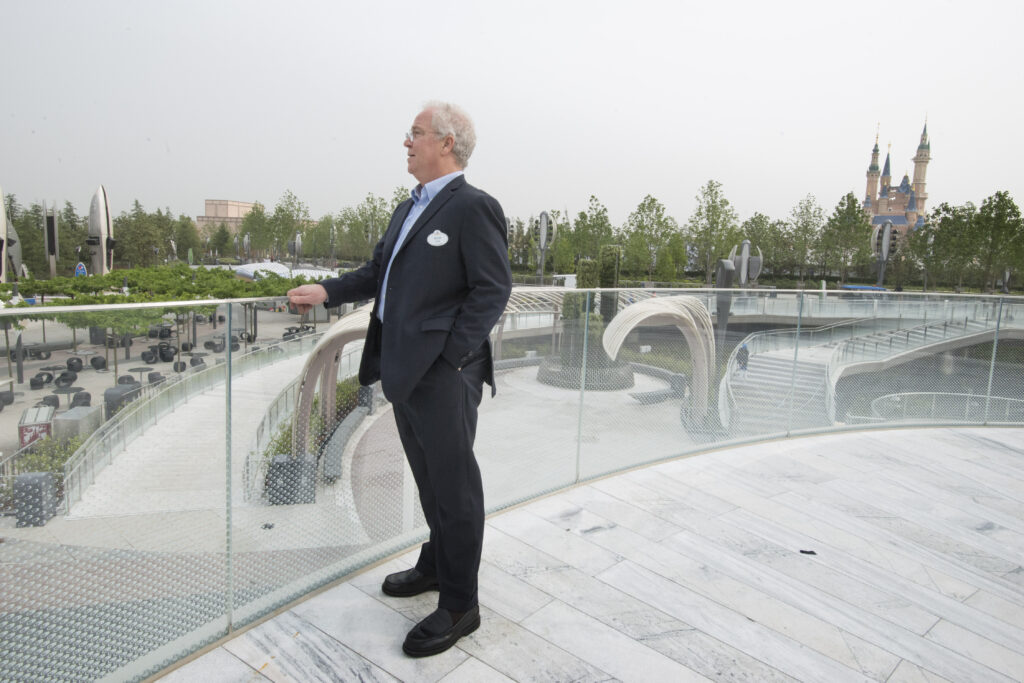
So there’s lots of discussion about more Imagineering content on Disney Plus with projects that we know many of our fans want to learn about.


